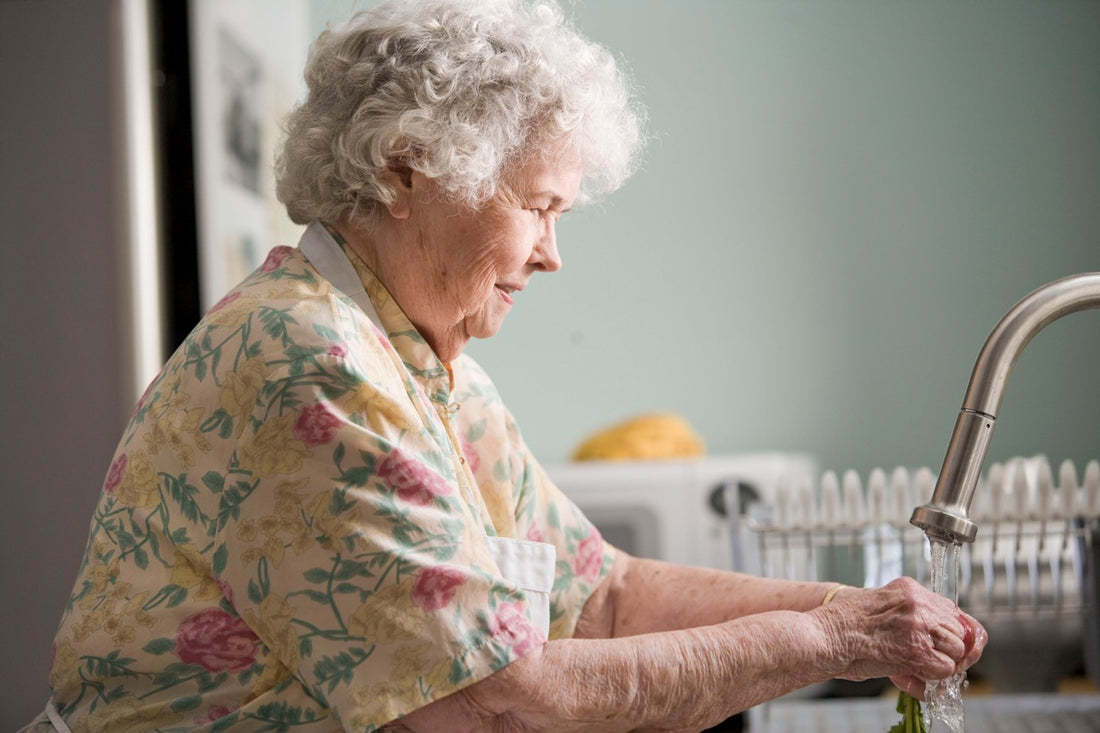With more and more of us living longer, and more people wanting to age comfortably in their own home, it may be necessary to modify your property so you, or your elderly loved one, can continue to live there safely. Home adaptations can transform life for older people, as well as those living with injuries or disability. From small changes to major alterations, taking the initiative to alter your home can make moving around and completing everyday tasks much easier.
Below are 5 simple home modifications that will improve the safety and comfort of anyone living with limited mobility.
1. Installing grabrails for extra support
Grab rails are easy to fit throughout the home and can provide vital additional support when moving around. For elderly people or those unsteady on their feet, installing handrails on both sides of a flight of stairs is a must.
Grab rails can also provide a firm grip and extra support in any location where it is necessary to change position. Safety can be improved when sitting and standing to use the toilet, for example, or when getting in and out of the bath or shower. Ensure that any handrails are comfortable and sturdy, as well as being positioned correctly for the user.
2. Adapting bathroom facilities
When getting in and out of the bathtub becomes difficult, you may want to consider level access solutions. Removing the existing bathtub to install a walk-in bath or level access shower can greatly enhance safety and increase ease of use.
Another, less costly, option for easier bathing is a transfer bench. This fits over the existing bathtub and allows users to sit safely on the side of the bath, so they can comfortably lift one leg at a time into the tub. Finally, consider installing slip-resistant tape – this simple retrofit solution can reduce the risk of slips and falls anywhere where water is likely to create slippery surfaces.

3. Moving bedrooms and bathrooms to the ground floor
Stairs can present a serious hazard for those with restricted mobility. If you don’t live in a bungalow, you may need to re-purpose your living space to ensure the bedroom and bathroom are on the ground floor.
Changing sleeping arrangements in this way removes the risk of slips or falls on the stairs, particularly at night when light levels are low. Remember to ensure that any downstairs bedroom has access to bathroom facilities with appropriate safety features.
4. Installing ramps and/or stairlifts
For people in a wheelchair or those with balance problems, even small steps can present big challenges. Installing ramps on outdoor stairs is one way to provide much-needed independence. Depending on the design of your home, you may need to engage contractors to undertake installation, ensuring ramps are the correct height for elderly users. Indoor ramps may also be necessary for wheelchair users, to provide a smooth transition from one surface to another.
For some older people keen to remain in their own home, a stairlift is the best way to retain independence whilst prioritising safety. A dedicated stairlift is a great way to help older people save energy for more pleasurable activities, so life at home is less restricted.
5. Investing in specialised furniture
Specially designed or adapted furniture can also have a huge impact on comfort and safety for those with restricted mobility. High-seat orthopaedic chairs, for example, make sitting and standing easier, as well as providing somewhere to relax during the day.
For comfort at night, an adjustable bed is a great investment. Motorised adjustment makes it easy to change position during the night or to move from a horizontal to an upright position, while a specially designed mattress provides appropriate support. For older people with back problems, mobility issues, or conditions that make sleeping troublesome, this can be the perfect home modification – providing a safe solution that not only improves sleep quality, but also makes it easier to get in and out of bed.

